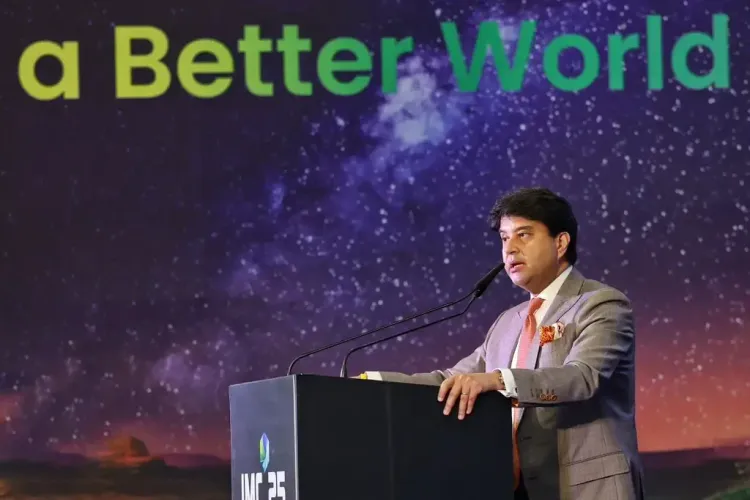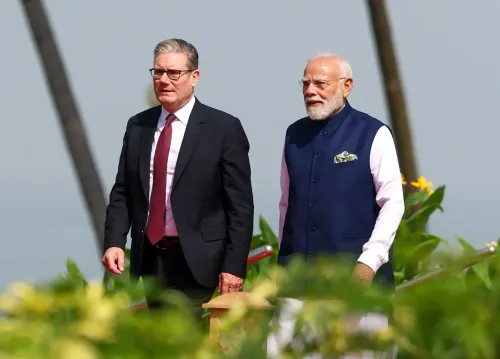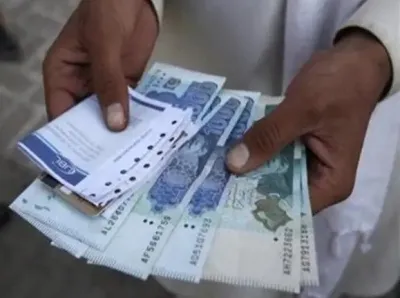Is the Indian Satcom Market Set to Triple to $14.8 Billion by 2033?

Synopsis
Key Takeaways
- The Indian satcom market is expected to grow significantly by 2033.
- Minister Jyotiraditya Scindia emphasizes India's transition to a global leader in satellite innovation.
- A Rs 900 crore facility will safeguard satellite resources.
- Digital inclusion is a priority, reaching underserved populations.
- India's rapid 5G rollout highlights its commitment to connectivity.
New Delhi, Oct 9 (NationPress) The Indian satellite communications (satcom) market, currently valued at $4.3 billion in 2024, is projected to grow to a staggering $14.8 billion by 2033, reflecting both the economic and strategic significance of the sector, as stated by Union Communications Minister Jyotiraditya Scindia.
Minister Scindia highlighted India’s extraordinary evolution from Aryabhata (1975) to recent missions like Chandrayaan-3, Aditya-L1, and NISAR, alongside the forthcoming Gaganyaan and advanced reusable launch vehicles. He emphasized that India has transitioned from being a follower to a global frontrunner in space innovation.
“India must not only be a consumer of satellite services but should also emerge as a hub, an exporter, and a reliable global partner,” he mentioned during the India Mobile Congress (IMC) 2025 event.
The minister urged for a cohesive, milestone-focused SATCOM initiative that brings together the government, industry, startups, academia, and international collaborators.
“In the grand symphony of progress, India will not merely be a passive observer. It will assume the role of conductor, orchestrating global innovation and composing the tune of opportunity,” declared Scindia.
He announced a Rs 900 crore National Satcom Monitoring Facility aimed at protecting spectrum resources and fortifying India’s satellite gateways.
While addressing attendees, Scindia remarked that the Satcom Summit signifies “the dawn of a revolution — a revolution birthed in the sky, propelled by satellites, but intended to impact lives on the ground.”
He pointed out that under the visionary leadership of Prime Minister Narendra Modi, India has positioned itself as a leader in global digital transformation, connecting 99.9 percent of the population through 4.8 lakh 5G towers in merely 20 months — the swiftest rollout globally.
The minister affirmed that satellite communication will now extend the promise of digital inclusion to the most remote regions of the country. “Satcom is no longer a luxury; it is a right — a form of justice in the digital age,” he asserted, adding that it will empower farmers, fishermen, doctors, and students in previously inaccessible areas.









